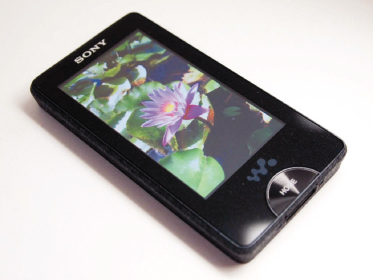1
Introduction
The basic structure of organic light-emitting diodes (OLEDs) was reported by Ching W. Tang and Steven Van Slyke at Eastman Kodak in 1987 [1]. This was a groundbreaking study and was later referred to as the “first OLED paper.” Now, almost 25 years later, there is a large market place for OLED devices. After the first active-matrix-driven OLED (AMOLED) display was introduced by SK Display (a joint manufacturing venture by Eastman Kodak and Sanyo Electric), the first product using an AMOLED display was Kodak’s LS633 digital camera (see Fig. 1.1). This was followed by the widescale development of many other OLED-based products, including cellular phones, audioplayers (Fig. 1.2), portable multimedia players (Fig. 1.3), and portable global positioning satellite (GPS) devices, which now provide high-resolution displays in brilliant, multitone colors.
Figure 1.1 The first active-matrix OLED display product on the market (Kodak LS633 digital camera).

Figure 1.2 Example of an audioplayer using active-matrix OLED (AMOLED) (Sony Walkman NW-X-1050).

Figure 1.3 Example of a personal multimedia player using AMOLED (Dynaconnective Dawin; original equipment manufacturer [OEM] product of the Neosol Cliod).
Larger-display products have also been introduced on the market, such as those ...
Get OLED Display Fundamentals and Applications now with the O’Reilly learning platform.
O’Reilly members experience books, live events, courses curated by job role, and more from O’Reilly and nearly 200 top publishers.

